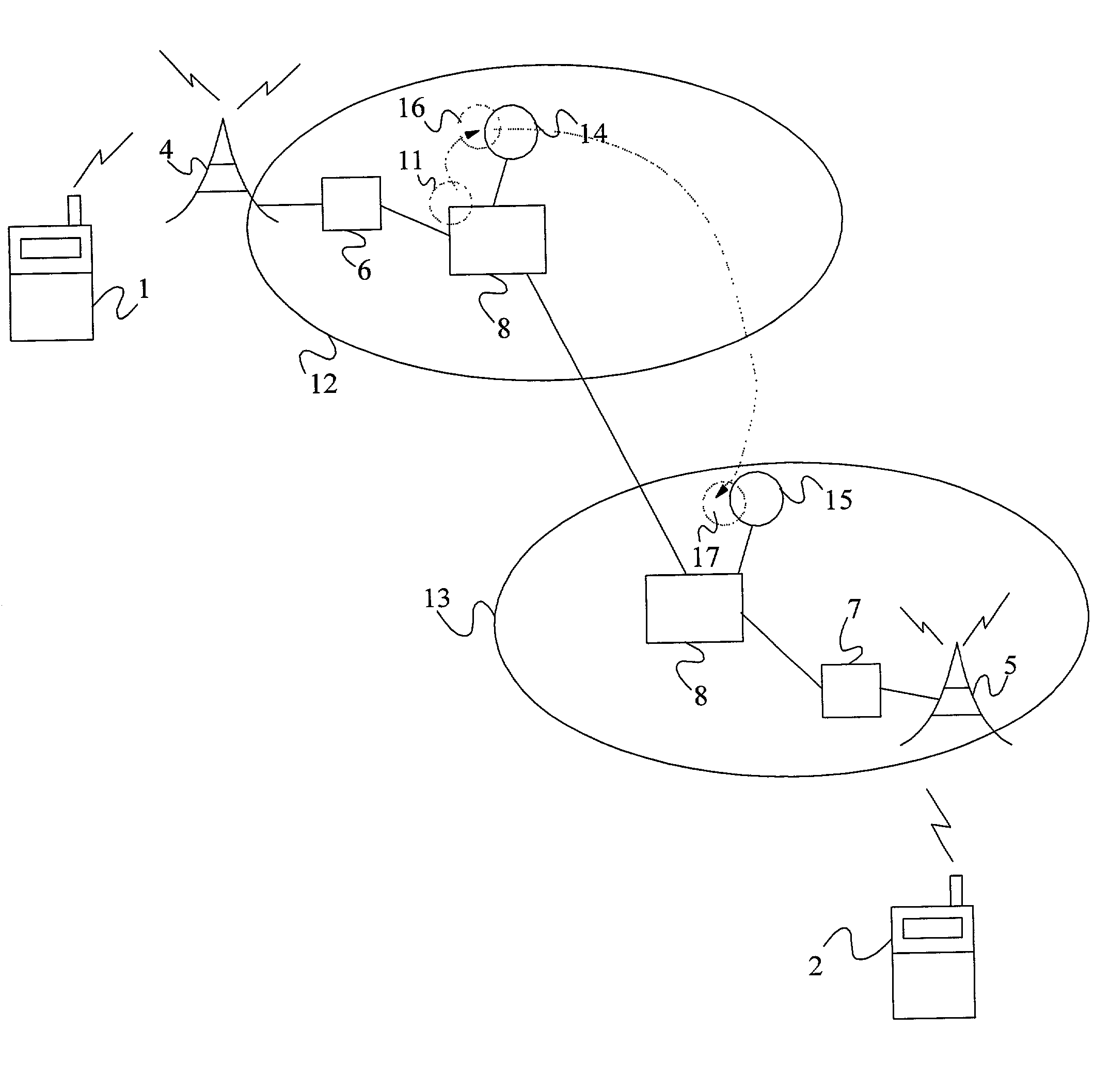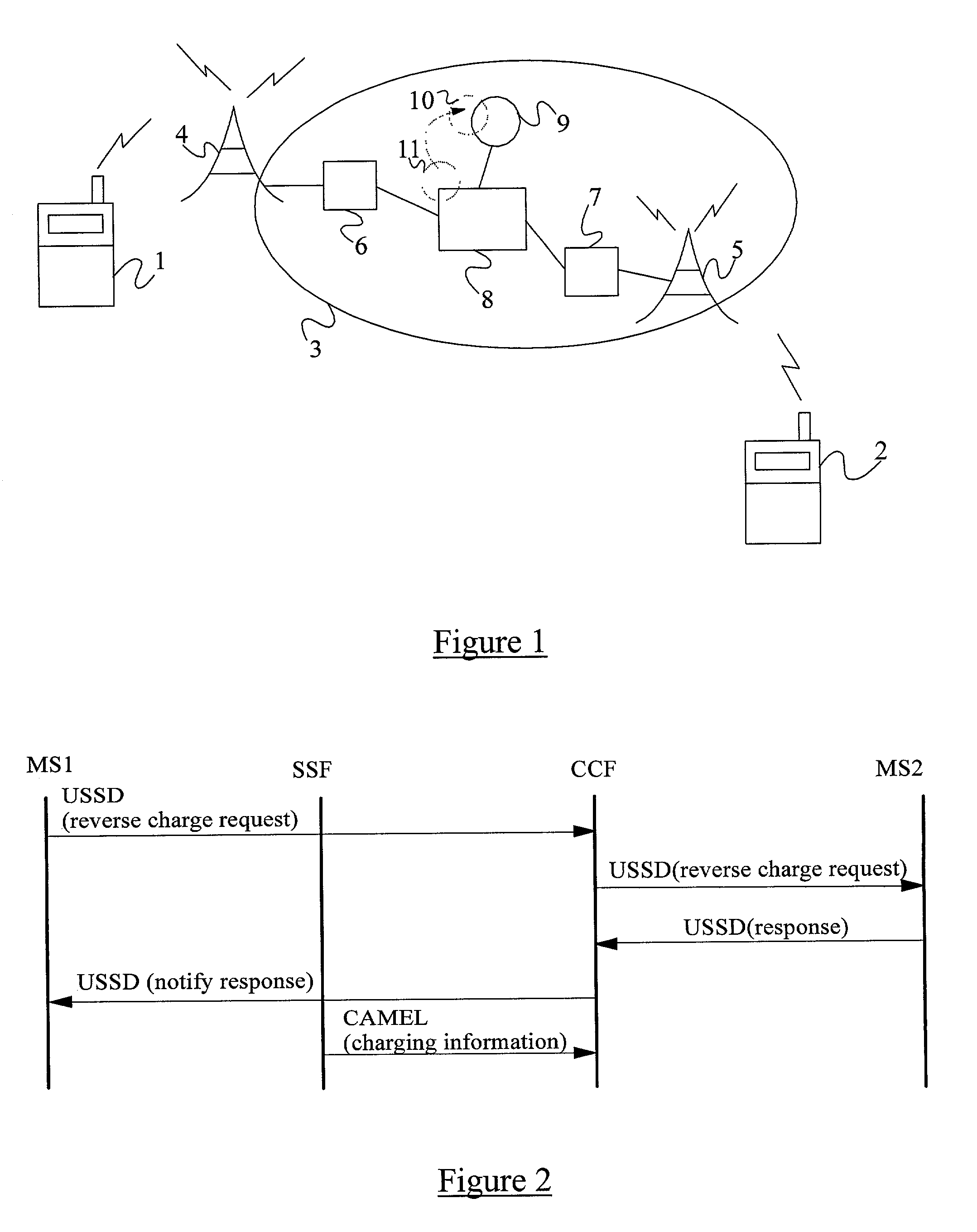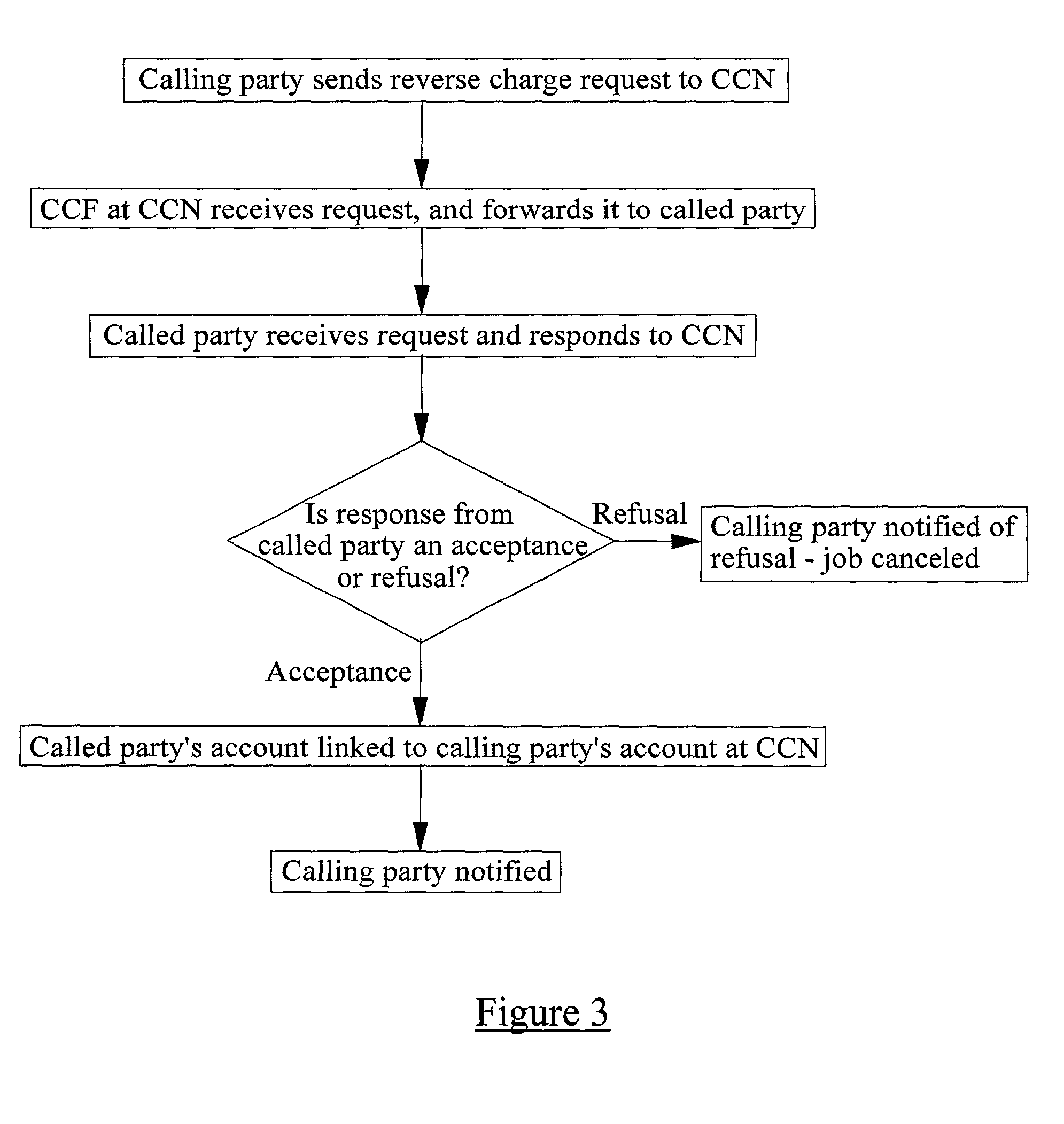Cross-charging in a mobile telecommunication network
a mobile telecommunication network and cross-charging technology, applied in wireless communication services, electrical equipment, wireless commuication services, etc., can solve the problems of repeated need for intervention by a human operator, time-consuming for the operator and the caller, and inconvenient for the caller
- Summary
- Abstract
- Description
- Claims
- Application Information
AI Technical Summary
Benefits of technology
Problems solved by technology
Method used
Image
Examples
Embodiment Construction
[0022] In FIG. 1 there is illustrated a pair of mobile telephones 1,2 which belong to respective subscribers of a mobile telephone network 3 (the "home" network for the two subscribers). The network comprises Base Stations (BSs) 4,5 which provide the radio interface for the network to subscriber telephones, Base Station Controllers (BSCs) 6,7 which control respective sets of BSs, and one or more Mobile Switching Centres 8 (MSCs) which handle the routing of calls to and from mobile telephones.
[0023] Coupled to the MSC 8 illustrated in FIG. 1 is a Cost Control Node (CCN) 9. The CCN 9 maintains accounts for subscribers of the network 3. These subscribers may be pre-paid subscribers in which case the accounts record the current credit of the subscribers, or may be post-paid subscribers in which case the accounts record the balance owed by the subscribers (or the accounts may be for both pre-paid and post-paid subscribers). A CCF 10 implemented at the CCN communicates with Service Switch...
PUM
 Login to View More
Login to View More Abstract
Description
Claims
Application Information
 Login to View More
Login to View More - R&D
- Intellectual Property
- Life Sciences
- Materials
- Tech Scout
- Unparalleled Data Quality
- Higher Quality Content
- 60% Fewer Hallucinations
Browse by: Latest US Patents, China's latest patents, Technical Efficacy Thesaurus, Application Domain, Technology Topic, Popular Technical Reports.
© 2025 PatSnap. All rights reserved.Legal|Privacy policy|Modern Slavery Act Transparency Statement|Sitemap|About US| Contact US: help@patsnap.com



